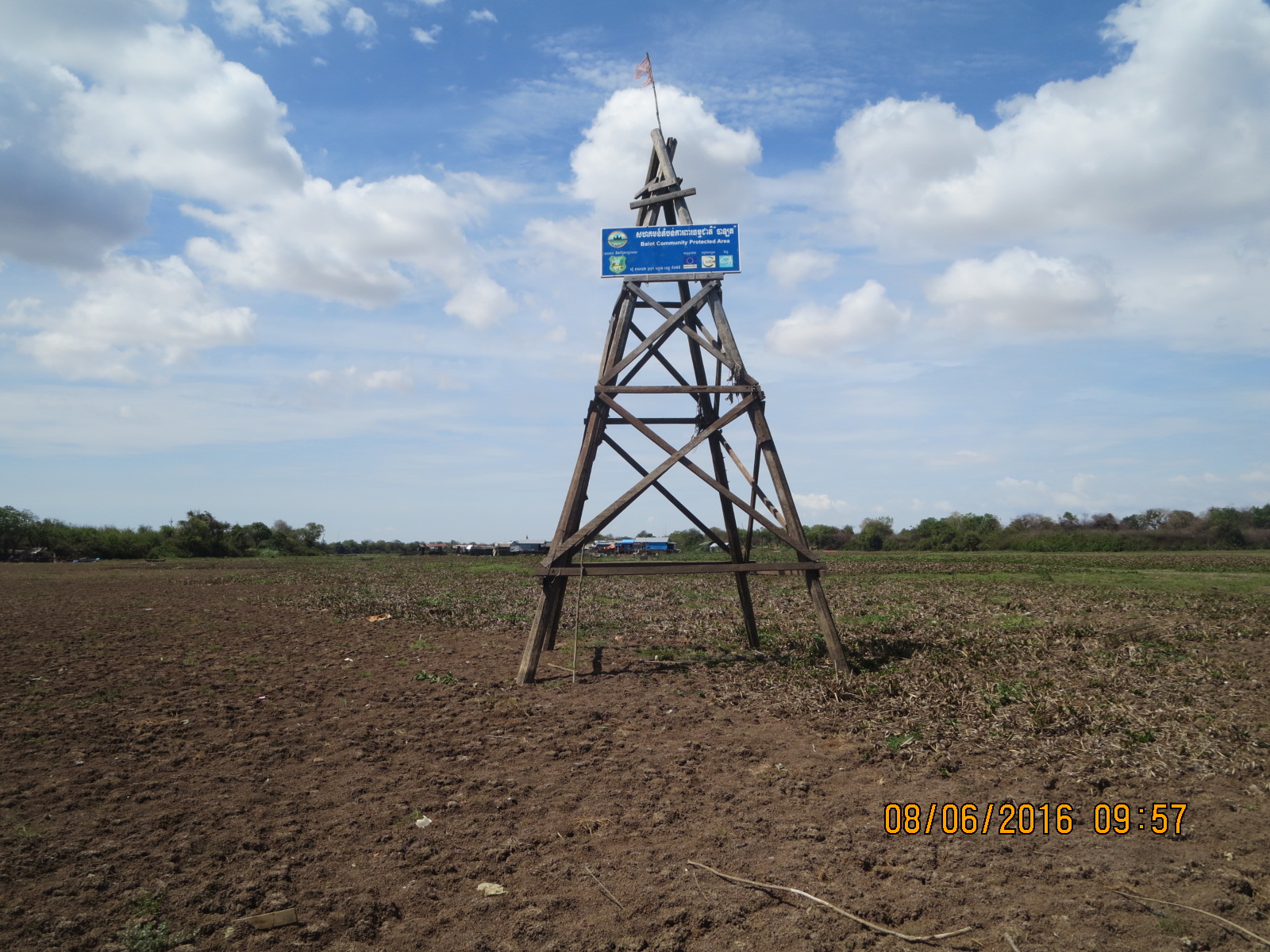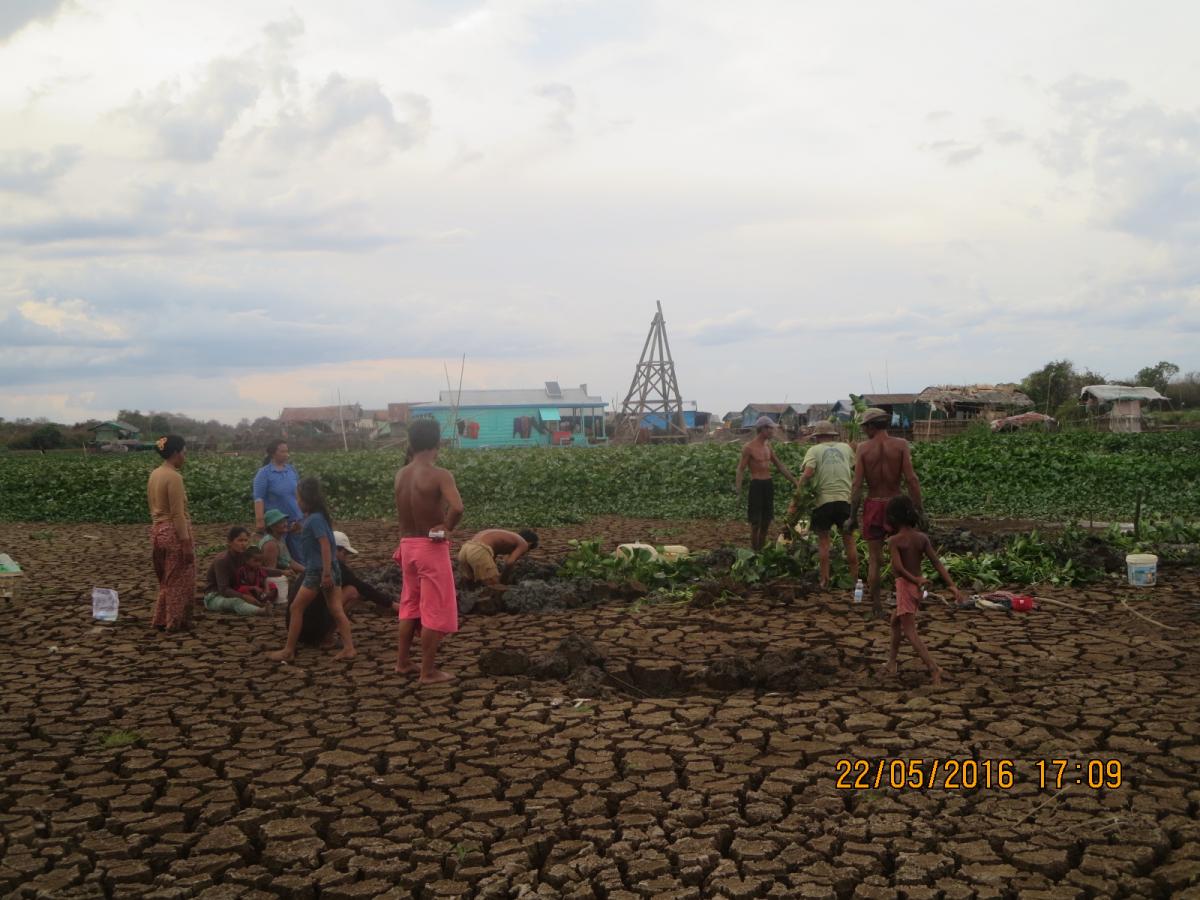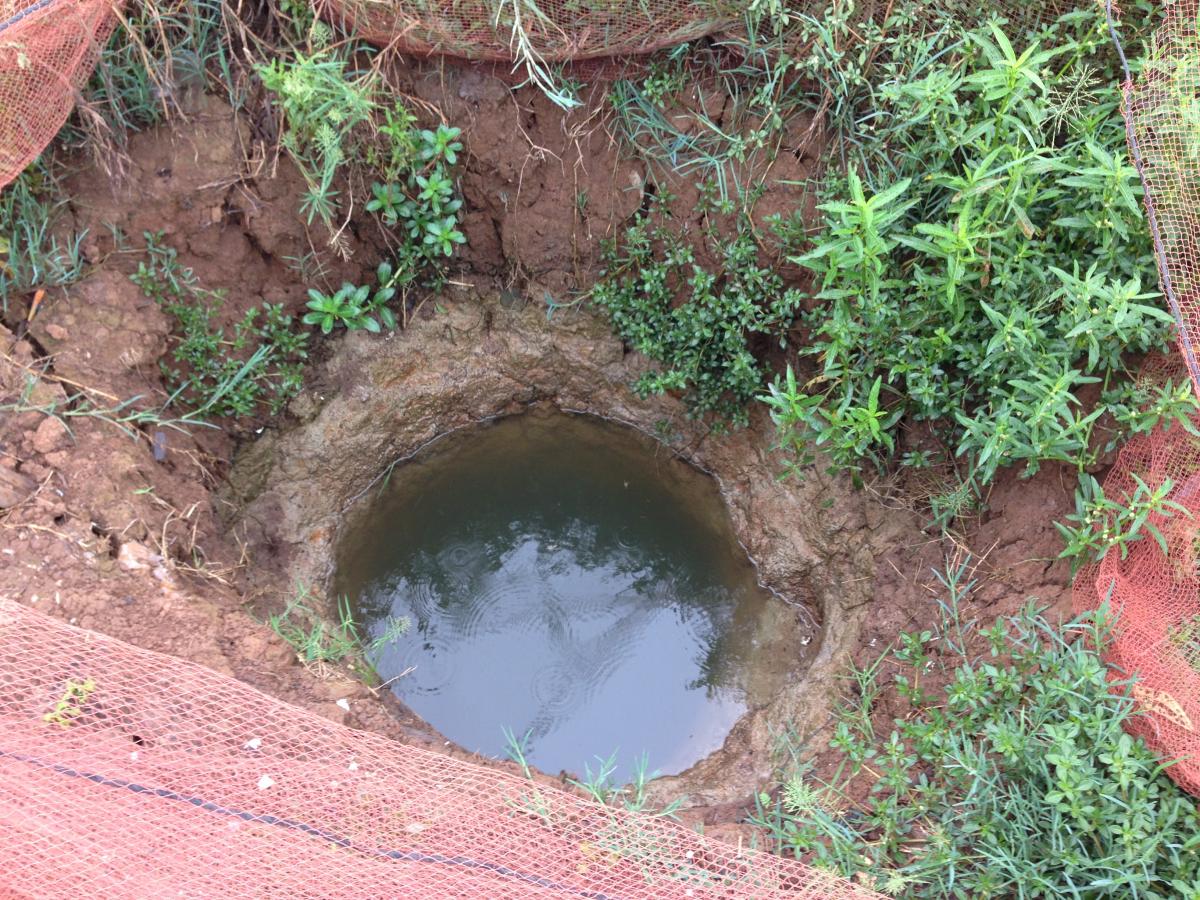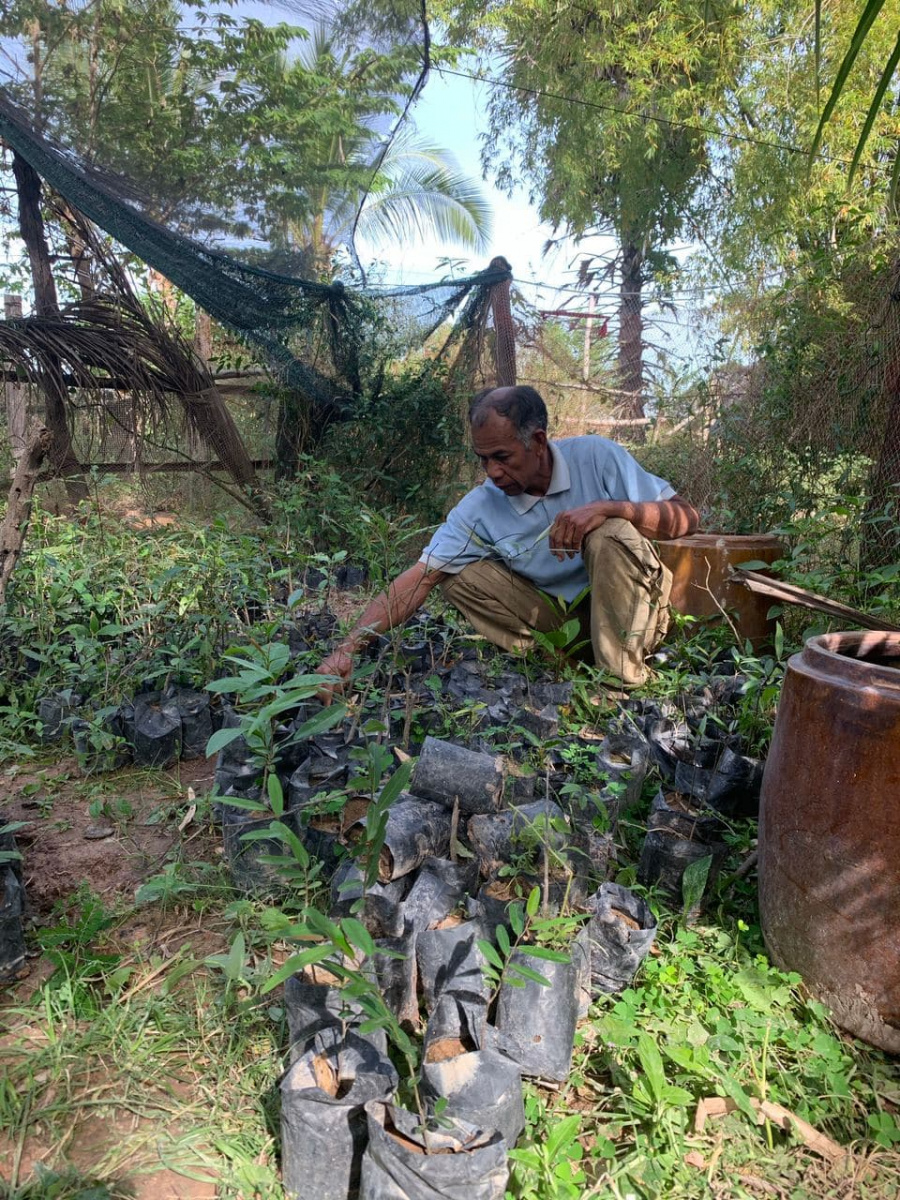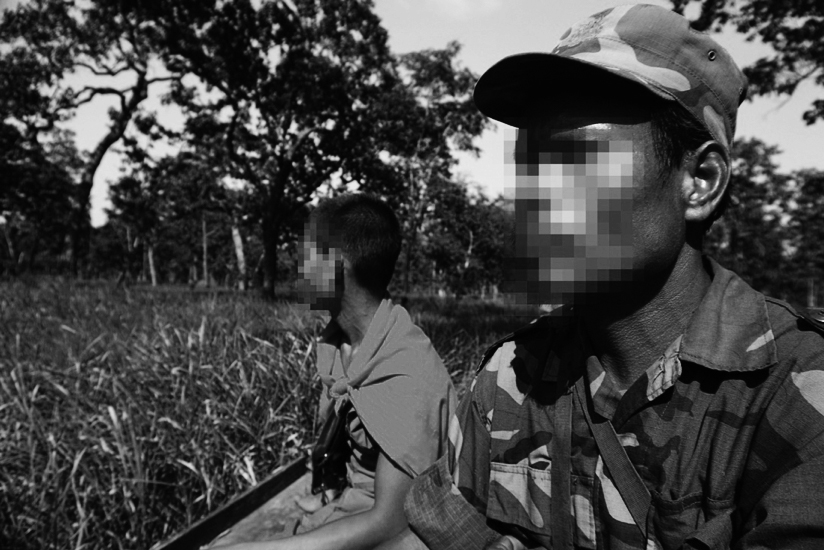Drought and illegal fishing in Balot: addressing new challenges
In late June, IUCN met the Balot community protected area (CPA) committee (located in the Boeung Chhmar Ramsar site) to discuss progress with the EU-funded IUCN/FACT project to strengthen community fisheries in three sites in the Tonle Sap. The meeting raised two new challenges: extreme weather and illegal fishing.
Despite this year's prolonged drought and extreme heat, it appears that the CPA, by virtue of including three deep pools, provides a degree of resilience. In March-April, Balot fishers reported an increase in fish catch near the CPA, with some earning from 40,000 riel ($10) to 70,000 riel ($17.50) per day. Total fish catch was about 5 tons of Trey taon (Butter catfish), 13 tons of Trey kanchous (Mytus rhegma), 15 tons of Trey andaeng (Walking catfish), and 1 ton of Trey ros (Sneakhead Murrel).
The CPA committee reported a sharp increase in the number of water bird species feeding in the CPA. As the Tonle Sap waters flow back into the Mekong, shallower waters make it easier for these birds to take advantage of a more concentrated food supply. The CPA therefore provides important biodiversity benefits as well.
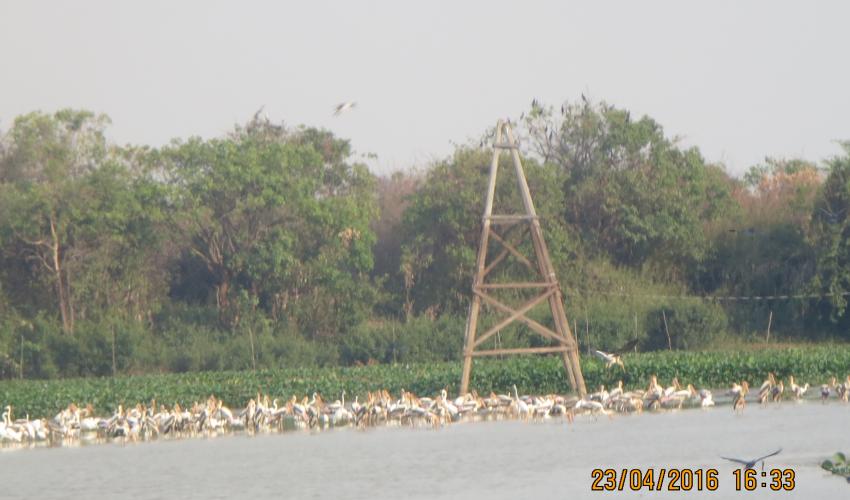 Photo: Large waterbird species found in feeding at the FCA in April 2016 © Sun Theoun / Balot CP, IUCN Cambodia
Photo: Large waterbird species found in feeding at the FCA in April 2016 © Sun Theoun / Balot CP, IUCN Cambodia
However, the continued lack of rain into May-June resulted in record low water levels in Balot. Even the deepest parts of the CPA dried out, leaving behind a dry, cracked river bed and dead mother fish. The drought also reduced the availability of clean freshwater for cooking and drinking. In response, many villagers have temporarily left Balot for Stoung District. Only four households now remain, digging wells into the desiccated floodplain to access clean water and relying on shallow pools to catch Trey Kranh (Three spot gourami) for subsistence.
The drought has also made Balot virtually inaccessible, resulting in delays support and protection from the Ministry of Environment (MOE), Fisheries Administration (FiA), and local police. Consequently, the CPA committee has reported a rise in illegal fishing. Reports of electro-fishing near the CPA started in March with three cases inside CPA itself. The resignation of three CPA committee members for illegal fishing inside the CPA highlights the challenge.
The increase in illegal fishing suggests an attitude change in Balot regarding the ideals of the CPA and the project. While most of those caught using electro-fishing were poorer or more uneducated residents, the discovery of the three CPA members indicates that it is an issue that spans the community. This was no doubt exacerbated by the drought: in a fishing-dependent community such as Balot, the need to fish to survive can overwhelm conservation efforts in times of environmental stress.
IUCN is now developing a mix of short and longer term solutions to tackle these problems.
First, we will organize a village-wide meeting in July to discuss illegal fishing, and re-iterate the links between fish conservation, ecosystem protection, and livelihood development. This will be an opportunity to prepare for the risk of the use of illegal long nets (Sach Dai) when water levels start to rise in July-August. These nets are set at the mouths of channels to catch mother fish that would otherwise enter from the Tonle Sap to spawn, thereby reducing fish recruitment and future harvests.
Enhancing the value of the CPA is also important. Solutions include dredging the CPA to create deeper pools that can withstand even longer periods of drought, expanding the use of fish attraction devices, such as water hyacinth or tree branches, to protect fish populations, and placing a net around the CPA to prevent mother fish from leaving the CPA during the late dry season.
In terms of capacity building, IUCN will focus on improving community patrolling of the CPA, while strengthening support networks with MOE and FiA to ensure timely law enforcement. These measures will be included in the CPA committee by-laws and management plan, which should be finalized by end of 2016.
